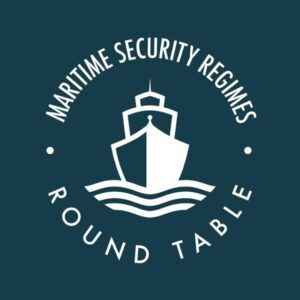
NORFOLK, Va. — The Combined Operations From the Sea Centre of Excellence (CJOS COE), based in Norfolk, conducted its annual maritime security regimes roundtable as a virtual event last week. CJOS is one of the 27 NATO accredited cenersof excellence.
About 250 people representing 30 countries from around the world took part in the conference.
“It’s not about having the numbers we have online, but about having the right people. We strive for tangible outputs and actions,” said Commodore Guy Thomas, the CJOS COE deputy director. “Talking and awareness is good, but action is better — a lot better.”
Welcoming remarks were delivered by Vice Adm. Daniel Dwyer, director of the CJOS COE, and U.K. Royal Navy Vice Adm. Keith Blount, who commands NATO’s Allied Maritime Command, delivered the keynote address.
Blount talked about the importance of the physical presence of NATO navies at sea, and the strategic affect that creates. He said that demonstrable credibility is a fundamental part of deterrence.
Blount said NATO has had to address a recent resurgence by Russia. Russia constitutes a spectrum of threats, from nuclear submarines and highly capable high-speed missiles to hybrid warfare forces occupying territory, he said. “After having been in the doldrums for many years following the Cold War, we see a different Russia emerging.”
He also called attention to the importance of protecting a increasingly vulnerable network of undersea infrastructure, including communication cables and energy pipelines.
Speakers during the roundtable discussed asymmetric threats such as terrorism, piracy, climate change and transnational crime, but there was also a lively conversation about China. Although not part of NATO’s traditional area of responsibility, the rise of China will be an important part of NATOs future.
The forum underscored the importance of embracing multi-domain warfighting and capabilities. However, Blount said, “It’s not so much about the individual capabilities but about integration.”
In the view of some of the speakers, while Russia must still be reckoned with, there are only two superpowers — the United States and China. While China does not border any NATO nation, what happens with China in the South China Sea does affect the western world and NATO.
The discussions alluded to NATO’s new focus of blue-ocean warfare in the North Atlantic, to include the standing up of Joint Forces Command Norfolk and the reestablishment of the U.S. 2nd Fleet (whose commander, Dwyer, is also the director of CJOS COE).
Speakers brought the participants up to date with maritime security operations around the globe, including Operation Orion in Colombia, NATO Operation Sea guardian in the Mediterranean, EU NAVFOR Mediterranean IRINI and the arms embargo off Libya and EU NAVFOR Atalanta in the Indian Ocean.
Presenters also addressed the growing use of new technologies, especially unmanned and autonomous systems, to help create larger and more effective sensor networks.
Matthew Searle, chief technology officer with Maritime Arresting Technologies, was one of the technology speakers. “I was impressed by the diversity of the presenters, who covered all aspects or maritime security from high level strategy and global issues down to specific threats,” he said.
Searle’s company makes maritime security barriers both above and below the water, specializing in rapidly deployable port security booms. “The event was a great opportunity to discuss the use of non-kinetic effectors in grey zone encounters with many stakeholders,” he said.
- A Day to Remember - September 11, 2023
- Indo-Pacific Maritime Security Exchange will examine emerging capabilities and capacity - July 12, 2023
- Cold Waters Spark Warm Relationship - April 20, 2023






